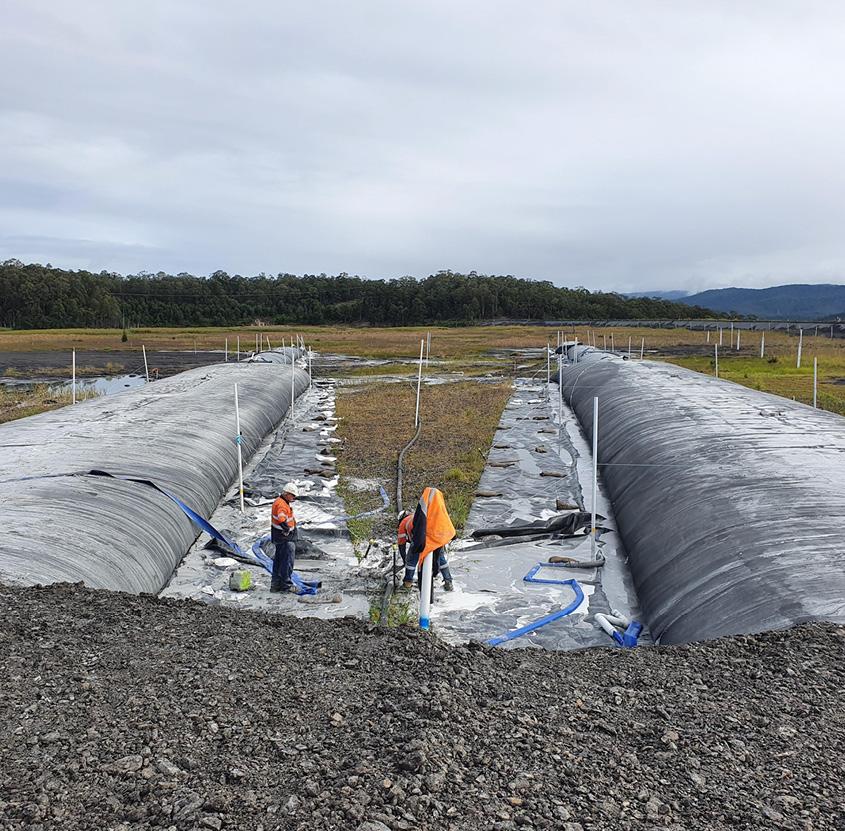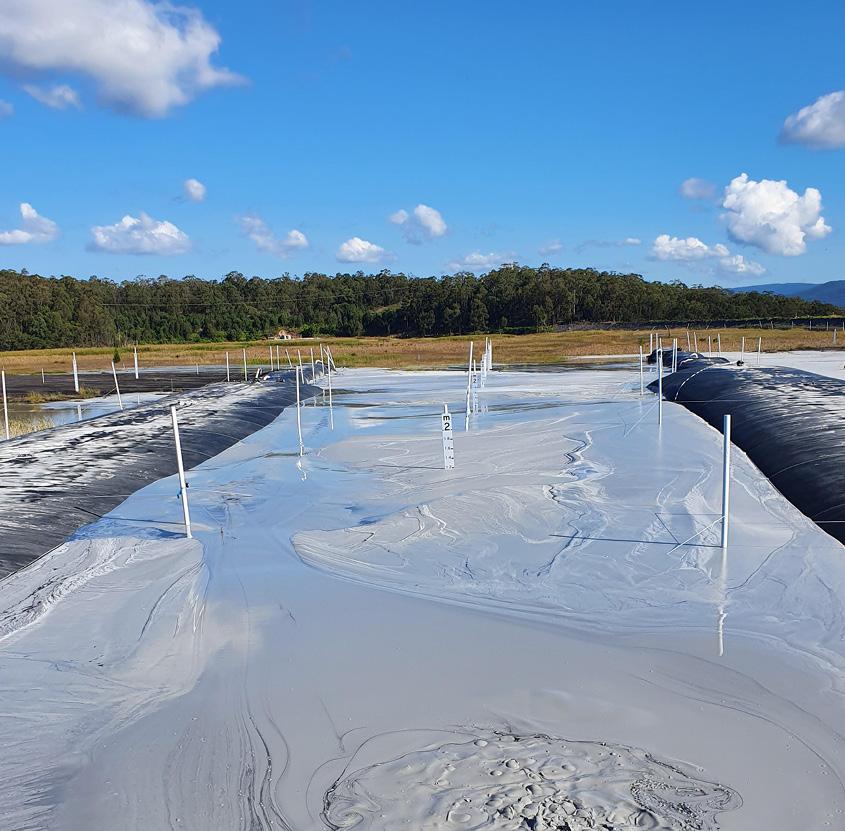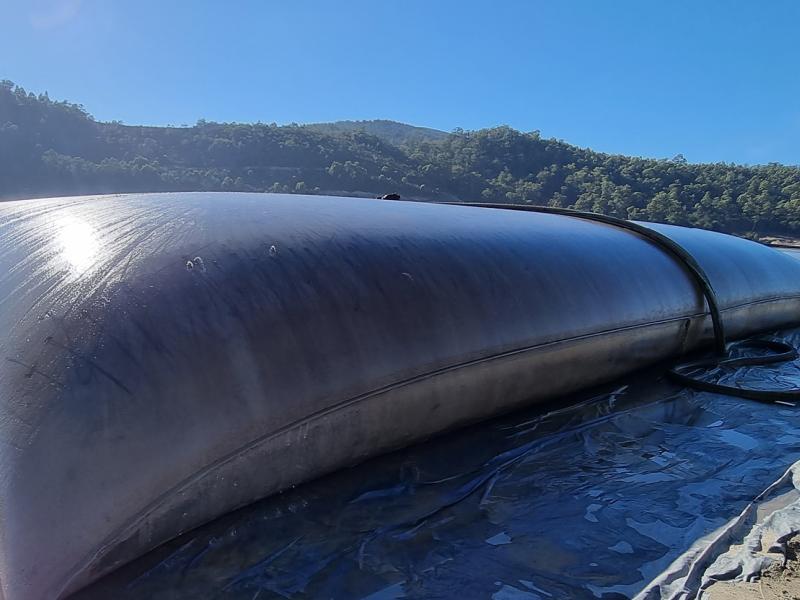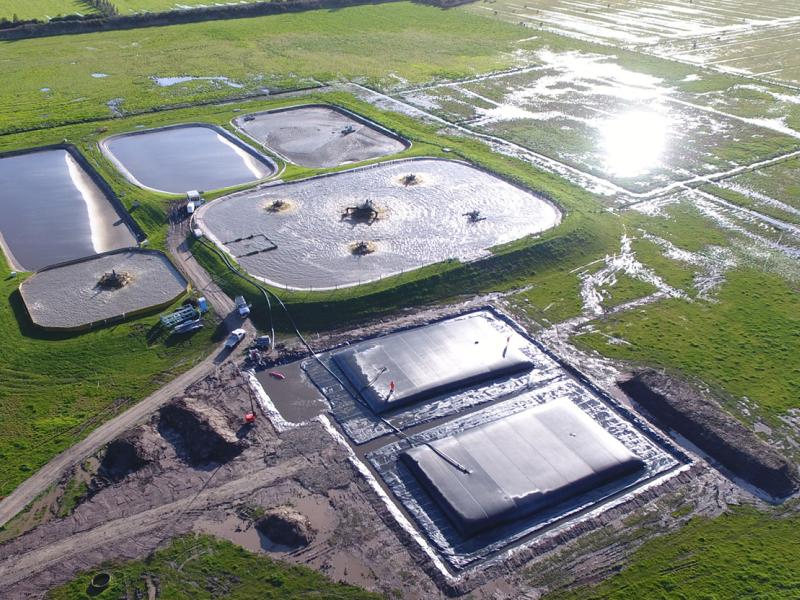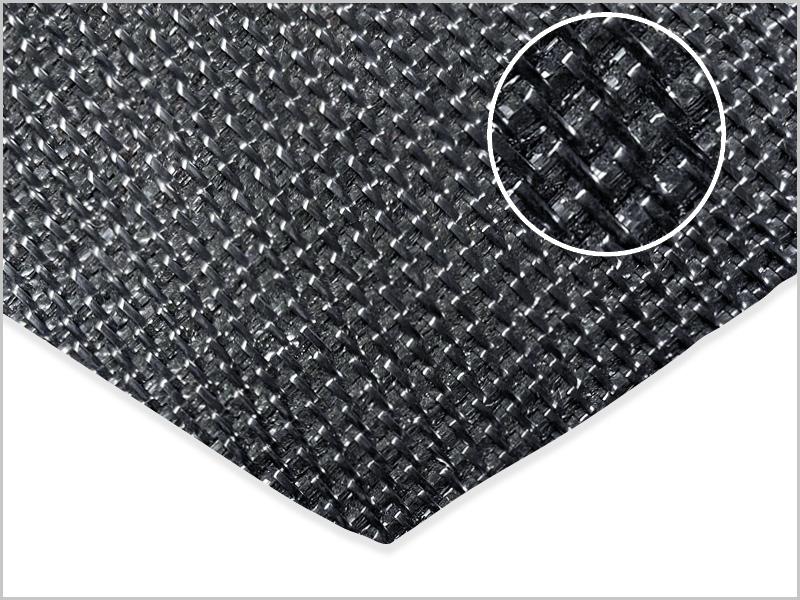
CHANNELING THE FLOW AND LIMITING THE SPREAD OF SLURRY WITH GEOTUBE
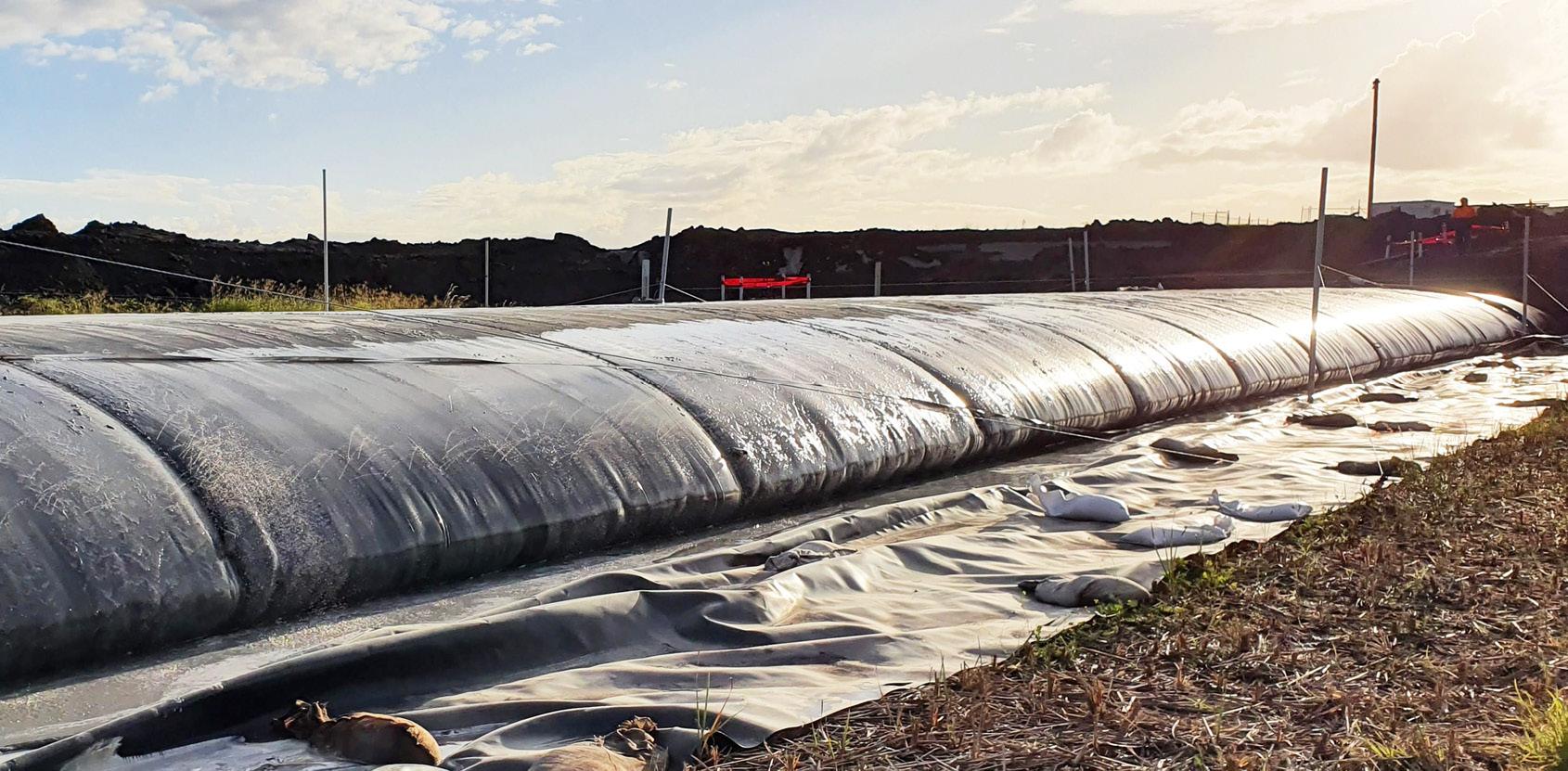
PROJECT DESCRIPTION
A mine site in regional New South Wales, which was under care and maintenance, required a solution to cap an existing tailings storage facility using fly ash. To ensure effective rehabilitation, the mixing and deposition techniques, as well as the breaching characteristics, needed to be confirmed to effectively assess the fly ash. Additionally, the strength parameters also had to be verified during laboratory testing.
The flowable nature of the fly ash prior to setting required innovative techniques to channel the flows and limit the spread of the slurry over the tailings storage facility. Rapid and easily constructed bund walls were implemented to minimise manual labour on its surface.
OUR SOLUTION
To assess the deposition performance of the fly ash, Solmax Geotube dewatering containers were utilised within temporary retaining structures filled with fly ash. In this case, the incoming slurry was not flocculated, which would normally ensure rapid dewatering.
In creating the retaining structures, no polymer was introduced, which led to clogging of the geotextile pores. This allowed the bags to remain relatively fullof wet slurry, maintaining their height. While it was expected that the bags would still dewater and drop in height, they could still be rapidly refilled to the desired height using the manifold system.
Geofabrics were able to run through the typical set up at the remote site and provide clarity on the expected performance of the bags. Concerns regarding stability, settling, overfilling, clogging and softening of the tailings crust were discussed on-site and considered low risk or manageable.
Geofabrics alongside supplier, Solmax supported this design end-to-end by ensuring all parties were comfortable with the process, which was relatively new to everyone involved. Geotube performed exactly as expected and the deposition characteristics of the fly ash were verified. The stakeholders and engineers were satisfied with the result and are keen to continue with other applications using Geotube dewatering containers.
PRODUCT USED
Solmax Geotube® Dewatering Container Geotextile
- Made from an engineered textile that is designed for dewatering high moisture content sludge and sediment
- High flow rate allows residual materials to dewater, whilst containing solids
- Simple to use as there are no mechanical or moving parts that could breakdown or wear and tear
- Custom fabricated with seaming techniques that withstand pressure during pumping operations
- Available in many sizes, depending on volume and space requirements
- Supported by design advice and guidance on polymer use for your sludge
